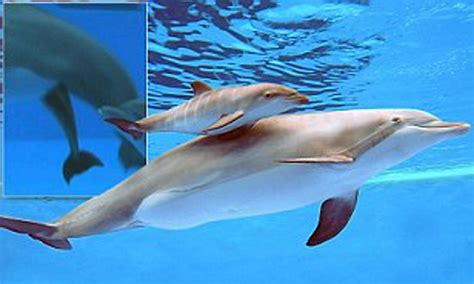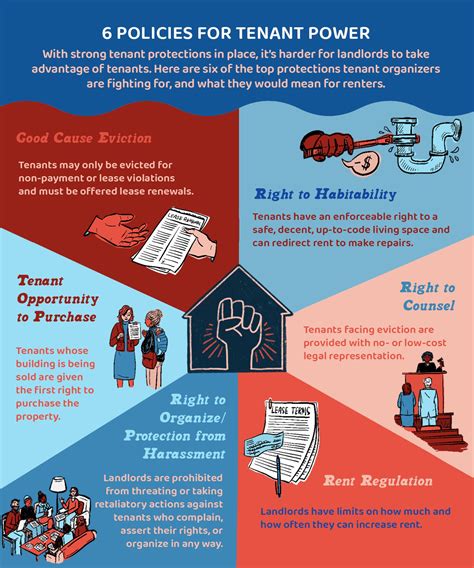
A bottlenose dolphin calf was born at Chicago’s Shedd Aquarium, with another female dolphin assisting the mother during the delivery, an event captured on video and celebrated by the aquarium staff.
CHICAGO – Shedd Aquarium is celebrating the birth of a bottlenose dolphin calf, a rare and captivating event made even more remarkable by the presence of another female dolphin who appeared to assist the mother during labor. The birth, which was captured on video, marks a significant milestone for the aquarium’s marine mammal program and provides valuable insights into dolphin social behavior.
The newborn calf, whose sex has yet to be determined, arrived on May 26, 2024, to mother, Alligator, a 28-year-old bottlenose dolphin who has resided at Shedd Aquarium since 1991. What distinguishes this birth is the observable assistance provided by another female dolphin, named Salty, who has been a long-time companion of Alligator. This behavior, though not entirely unprecedented, offers a fascinating glimpse into the complex social dynamics of dolphins.
“We are overjoyed to welcome this new calf to our Shedd Aquarium family,” said Peggy Sloan, Chief Animal Connections Officer at Shedd Aquarium, in a statement released by the aquarium. “The birth of a dolphin is always a cause for celebration, and this one is particularly special because of the apparent assistance provided by Salty. It highlights the intricate social bonds that these animals share.”
The birth process, which lasted several hours, was closely monitored by the aquarium’s animal care and veterinary teams. According to Shedd Aquarium, Salty stayed close to Alligator throughout the labor, nudging and swimming alongside her. She also positioned herself in such a way that she seemed to be guiding the newborn calf towards the surface for its first breath.
“Salty’s behavior was truly remarkable,” explained Dr. Rita Stacey, Vice President of Animal Health Research and Conservation at Shedd Aquarium. “While we have observed similar assistance in other dolphin births, the level of engagement and the apparent coordination between Alligator and Salty were particularly noteworthy. It suggests a deep level of trust and cooperation between these two individuals.”
The calf is currently under constant observation by the aquarium’s marine mammal team. It is nursing regularly and appears to be healthy and thriving. The first few weeks of a dolphin calf’s life are critical, as it learns to swim, breathe, and bond with its mother.
“We are providing Alligator and her calf with a quiet and comfortable environment to allow them to bond and for the calf to develop,” said Sarah Milton, Animal Care Supervisor. “So far, everything is progressing as expected, and we are optimistic about the calf’s future.”
Visitors to Shedd Aquarium may have the opportunity to observe Alligator and her calf in the Abbott Oceanarium, although access may be limited in the initial weeks to minimize disturbance to the new family. The aquarium plans to share updates on the calf’s progress through its website and social media channels.
Dolphin Social Behavior and Cooperative Birthing
The observed assistance from Salty underscores the highly social nature of dolphins. These marine mammals are known for their complex social structures, cooperative hunting strategies, and strong bonds between individuals. Dolphins often live in pods, which can range in size from a few individuals to several hundred, and they communicate with each other through a variety of vocalizations, including clicks, whistles, and pulsed sounds.
Cooperative behavior, including assistance during birthing, has been documented in several dolphin species. This behavior is thought to be driven by a combination of factors, including kinship, reciprocity, and the benefits of social cohesion. In some cases, female dolphins may act as “midwives,” helping to protect the mother and calf from predators, guiding the calf to the surface for air, and even assisting with the delivery process.
“The role of a ‘midwife’ dolphin is not fully understood, but it is likely that it serves several important functions,” explained Dr. Stacey. “Firstly, it provides emotional support to the mother during a stressful time. Secondly, it helps to ensure the safety of the mother and calf from potential threats. And thirdly, it may help to facilitate the birthing process itself.”
The presence of a supportive social network can have a significant impact on the survival and well-being of dolphins, particularly during vulnerable periods such as pregnancy and lactation. Cooperative birthing is just one example of the many ways in which dolphins work together to enhance their chances of survival.
Bottlenose Dolphins: Biology and Conservation
Bottlenose dolphins (Tursiops truncatus) are one of the most well-known and widely distributed species of dolphin. They are found in temperate and tropical waters around the world, and they are highly adaptable, inhabiting a variety of habitats, including coastal waters, bays, estuaries, and open ocean.
Bottlenose dolphins are intelligent and social animals, and they are known for their playful behavior and their ability to learn complex tasks. They are also highly vocal, and they use a variety of sounds to communicate with each other.
Bottlenose dolphins are opportunistic feeders, and their diet varies depending on their location and the availability of prey. They typically feed on fish, squid, and crustaceans. They use a variety of hunting strategies, including echolocation, cooperative hunting, and strand feeding.
The conservation status of bottlenose dolphins varies depending on the population. Some populations are considered to be stable, while others are threatened by a variety of factors, including habitat loss, pollution, entanglement in fishing gear, and hunting.
“Bottlenose dolphins face a number of threats in the wild,” said Dr. Stacey. “It is important that we continue to study these animals and to work to protect their habitats and reduce the threats that they face.”
Shedd Aquarium is actively involved in bottlenose dolphin conservation efforts. The aquarium conducts research on dolphin behavior, physiology, and health, and it participates in rescue and rehabilitation efforts for injured and stranded dolphins. The aquarium also works to educate the public about the importance of dolphin conservation.
The Shedd Aquarium’s Marine Mammal Program
Shedd Aquarium has a long history of marine mammal care and conservation. The aquarium’s marine mammal program is dedicated to providing the highest quality care for its animals, conducting research to advance our understanding of marine mammal biology and behavior, and educating the public about the importance of marine mammal conservation.
The aquarium’s marine mammal team consists of experienced veterinarians, animal care specialists, and researchers who are passionate about the well-being of the animals in their care. The team provides a comprehensive program of preventive health care, enrichment, and training to ensure that the animals are healthy, happy, and engaged.
“Our marine mammal program is committed to providing the best possible care for our animals,” said Peggy Sloan. “We are proud of our record of success in breeding and caring for dolphins and other marine mammals, and we are committed to continuing to advance our knowledge and expertise in this field.”
Shedd Aquarium’s commitment extends beyond its own walls, engaging in collaborative research efforts with other institutions and organizations around the globe. This collaborative approach allows for a broader understanding of marine mammal behavior, health, and conservation needs. The aquarium also actively participates in stranding response and rescue efforts, providing critical care to injured or stranded marine mammals and, when possible, returning them to their natural habitats. The aquarium’s education programs reach a wide audience, from school children to adults, raising awareness about the challenges facing marine mammals and inspiring action to protect these vulnerable species.
The Importance of Captive Breeding Programs
Captive breeding programs, such as the one at Shedd Aquarium, play an important role in the conservation of endangered species. These programs help to maintain genetic diversity, provide opportunities for research, and educate the public about the importance of conservation.
While captive breeding programs are not a substitute for protecting wild populations, they can serve as a valuable tool in the effort to conserve endangered species. In some cases, captive-bred animals may be released back into the wild to supplement declining populations.
“Captive breeding programs can be a valuable tool in the effort to conserve endangered species,” said Dr. Stacey. “However, it is important to remember that these programs are just one part of a comprehensive conservation strategy. We must also work to protect wild populations and their habitats.”
The birth of the dolphin calf at Shedd Aquarium is a testament to the success of the aquarium’s marine mammal program and its commitment to conservation. It is also a reminder of the importance of protecting these magnificent animals and their habitats. The aquarium continues to be at the forefront of marine mammal research, care, and conservation, contributing valuable knowledge and expertise to the global effort to protect these iconic species.
Future Research and Observation
The birth of the calf presents Shedd Aquarium with a unique opportunity to further study dolphin behavior, particularly in the context of cooperative care. Researchers plan to observe the interactions between Alligator, Salty, and the calf closely, documenting their communication patterns, social dynamics, and the calf’s developmental milestones. This research will contribute to a deeper understanding of dolphin social structures and the roles of individual dolphins within their pod.
Moreover, the aquarium hopes to gather more data on the long-term effects of social support during and after birth on the calf’s health and well-being. By comparing the calf’s development to that of other dolphins born without such visible assistance, researchers can gain insights into the potential benefits of cooperative care for dolphin populations.
The ongoing observations will also provide valuable educational opportunities for visitors to Shedd Aquarium, allowing them to witness firsthand the complex social lives of dolphins and learn about the importance of conservation efforts. Through interactive exhibits and educational programs, the aquarium aims to inspire a greater appreciation for these marine mammals and encourage responsible stewardship of the ocean environment.
Challenges and Considerations
While the birth of the calf is a positive event, Shedd Aquarium acknowledges the challenges and responsibilities that come with caring for a newborn dolphin in a captive environment. The aquarium’s marine mammal team is prepared to address any potential health issues that may arise and to provide the calf with the optimal conditions for growth and development.
One of the key challenges is ensuring that the calf develops the necessary skills to thrive in its environment, including hunting, communication, and social interaction. The aquarium’s trainers will work closely with Alligator and the calf to facilitate the learning process and to provide opportunities for the calf to develop its natural abilities.
Another consideration is the potential impact of the aquarium environment on the calf’s behavior and well-being. Shedd Aquarium is committed to providing a stimulating and enriching environment for its animals, but it is also aware that captivity can have limitations. The aquarium continuously evaluates its practices and makes adjustments as needed to ensure that the animals are able to express their natural behaviors and to live fulfilling lives.
Community Engagement and Education
Shedd Aquarium recognizes the importance of engaging the community in its conservation efforts and providing educational opportunities for people of all ages. The aquarium offers a variety of programs, including school visits, summer camps, and adult education courses, that focus on marine mammal biology, conservation, and the importance of protecting our oceans.
The birth of the dolphin calf provides a unique opportunity to engage the public in a discussion about the challenges facing dolphin populations in the wild and the steps that can be taken to protect them. Shedd Aquarium plans to use its website, social media channels, and on-site exhibits to share information about the calf’s progress and to educate visitors about the importance of dolphin conservation.
The aquarium also partners with local organizations and community groups to promote environmental awareness and to encourage people to take action to protect our planet. By working together, we can create a more sustainable future for dolphins and other marine mammals.
Ethical Considerations of Captivity
The birth of a dolphin calf in captivity invariably raises ethical questions about the appropriateness of keeping these highly intelligent and social animals in aquariums. Critics argue that even the largest and most well-maintained facilities cannot replicate the complex social environment and vast open spaces that dolphins require to thrive. They point to potential negative impacts on dolphin behavior, health, and longevity as evidence that captivity is inherently harmful.
Proponents of captive dolphin programs, on the other hand, argue that aquariums play a crucial role in conservation, education, and research. They maintain that well-managed facilities provide dolphins with excellent care, including nutritious diets, veterinary attention, and stimulating environments. They also emphasize the educational value of aquariums, which allow visitors to learn about dolphins and other marine animals and to develop a greater appreciation for the importance of ocean conservation.
Shedd Aquarium acknowledges these ethical considerations and is committed to providing the highest possible standard of care for its dolphins. The aquarium adheres to strict animal welfare guidelines, conducts ongoing research to assess the well-being of its animals, and actively participates in conservation efforts to protect dolphins in the wild.
The debate over the ethics of keeping dolphins in captivity is complex and multifaceted, with valid arguments on both sides. Ultimately, the decision of whether or not to support captive dolphin programs is a personal one. However, it is important to be informed about the issues and to consider the perspectives of all stakeholders.
Global Dolphin Conservation Efforts
The conservation of dolphins is a global effort, involving governments, non-governmental organizations, research institutions, and local communities. A number of international agreements and initiatives are in place to address the threats facing dolphin populations around the world.
The International Whaling Commission (IWC) is the primary international body responsible for the conservation and management of whales and dolphins. The IWC sets catch limits for certain dolphin species and promotes research on dolphin populations.
The Convention on International Trade in Endangered Species (CITES) regulates the international trade in endangered species, including dolphins. CITES aims to ensure that international trade does not threaten the survival of these species.
The United Nations Environment Programme (UNEP) also plays a role in dolphin conservation, through its work on marine pollution, habitat protection, and climate change.
In addition to these international efforts, many countries have their own national laws and regulations to protect dolphins. These laws may include restrictions on hunting, fishing, and development in dolphin habitats.
Local communities also play a vital role in dolphin conservation, through their traditional knowledge and practices. Many communities have a long history of coexisting with dolphins and have developed sustainable ways of using marine resources.
By working together, we can create a more sustainable future for dolphins and other marine mammals.
Conclusion
The birth of a bottlenose dolphin calf at Shedd Aquarium, aided by another female dolphin, underscores the complex social dynamics and cooperative behavior of these marine mammals. This event provides a unique opportunity for researchers to study dolphin behavior, particularly in the context of cooperative care, and to educate the public about the importance of dolphin conservation. Shedd Aquarium is committed to providing the highest possible standard of care for its dolphins and to contributing to global conservation efforts to protect these magnificent animals and their habitats. The calf’s arrival is a celebration of life and a reminder of the need to protect these intelligent creatures for generations to come. The ongoing observations and research will undoubtedly yield valuable insights into dolphin behavior and contribute to a better understanding of their complex social lives. The aquarium remains a vital hub for marine mammal research, care, and education, playing a crucial role in the global effort to protect these iconic species. The story of Alligator, Salty, and their new calf is a testament to the dedication of the Shedd Aquarium team and a beacon of hope for dolphin conservation efforts worldwide.
Frequently Asked Questions (FAQ)
Q1: What is the sex of the newborn dolphin calf at Shedd Aquarium?
A: The sex of the newborn dolphin calf has not yet been determined. The aquarium staff is closely monitoring the calf and will announce the sex once it is confirmed.
Q2: How can I see the dolphin calf at Shedd Aquarium?
A: Visitors may have the opportunity to observe Alligator and her calf in the Abbott Oceanarium, although access may be limited in the initial weeks to minimize disturbance to the new family. The aquarium recommends checking its website and social media channels for updates on viewing opportunities.
Q3: What role did Salty play in the birth of the dolphin calf?
A: Salty, another female dolphin, appeared to assist Alligator during labor. She stayed close to Alligator throughout the process, nudging and swimming alongside her. She also positioned herself in such a way that she seemed to be guiding the newborn calf towards the surface for its first breath.
Q4: What is Shedd Aquarium doing to ensure the health and well-being of the dolphin calf?
A: The aquarium’s marine mammal team is providing constant observation and care for the calf. They are ensuring that it is nursing regularly and providing a quiet and comfortable environment for Alligator and the calf to bond. The team is also prepared to address any potential health issues that may arise.
Q5: What are the main threats facing bottlenose dolphins in the wild?
A: Bottlenose dolphins face a number of threats in the wild, including habitat loss, pollution, entanglement in fishing gear, and hunting. Climate change is also an increasing threat, as it can alter ocean conditions and affect the availability of prey.









